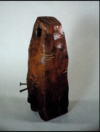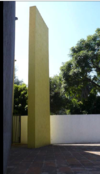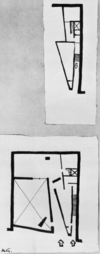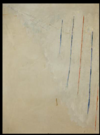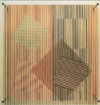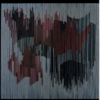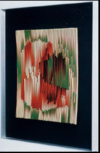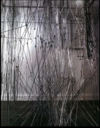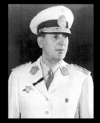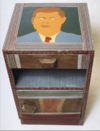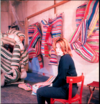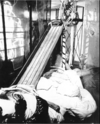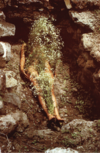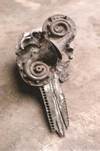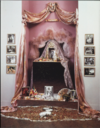Post-War Final Flashcards

Cercle et Carré exhibition catalogue –April 1930
incl. Torres-Garcia
Universal Constructivism, France

Cercle et Carré exhibition catalogue –April 1930
incl. Torres-Garcia
Universal Constructivism, France
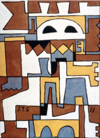
Joaquín Torres-García
Intertwined Psychic Forms
1933
Universal Constructivism, Uruguay
- 1933 starts to develop signature style and incorporate signs and symbols, is looking at ancient art (Trocadero)
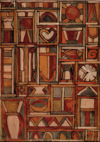
Joaquín Torres-García
Constructive Composition No. 548
1932
Universal Constructivism, Uruguay
- Invoke ideas of the constructive that are hallmark of artist at this time (painterly, handmade, truth to materials, notions of the ritual and metaphysical, cosmic)
- Flo sees signs as not literal references but metaphorical

Torres-García’s
“Structures” notebooks
Paris, 1932
Universal Constructivism, Uruguay
- shows that artist is looking universally at objects from all over (Byz, Classical Greek, African, Asian, Egyptian)

Torres-García’s
“Structures” notebooks
Paris, 1932
Universal Constructivism, Uruguay
- shows that artist is looking universally at objects from all over (Byz, Classical Greek, African, Asian, Egyptian)

Joaquín Torres-García
Inverted Map
Published in Circulo y cuadrado
No. 1, May 1936
Universal Constructivism, Uruguay
- everything points to Uruguay and Montevideo, emphasizes the local sense of place

Joaquín Torres-García
Abstract Tubular Structure
1937
Universal Constructivism, Uruguay
- still grids but no pictograms, most abstract of work, contradicts most previous works

Installation of fifth exhibition of Asociación de Arte Constructivo (AAC) June 1938,
including works by Torres-García and his students
Universal Constructivism, Uruguay
- Taller doesn’t get formed until 1940s, AAC is movement before TG forms when first returns from Paris

Joaquín Torres-García
Cosmic Monument, 1938
Parque Rodo, Montevideo, Uruguay
Universal Constructivism, Uruguay
- one of first works in Montevideo, sees as realization of his art in monumental size (altho still small)
- Work based on Sun Gate in Tiahuanaco in Bolivia, a pre-civilization thought to be one of first cities; gate in Trocadero
- Top of Cosmic Monument are three figures, cube, pyramid and sphere, goes back to Mondrian
- CM becomes predecessor to other Taller productions that are larger (like hospital murals)

Joaquín Torres-García
Universal Composition
1937
Universal Constructivism, Uruguay
- Around 1940s works become busier, more black and white, less modulation in earth tones, more students work begins to look like these later paintings

Joaquín Torres-García
Universal Art
1943
Universal Constructivism, Uruguay
- Around 1940s works become busier, more black and white, less modulation in earth tones, more students work begins to look like these later paintings

Removedor [Paint Remover]
1945-51
Torres-Garcia publication
Universal Constructivism, Uruguay
- Journal begun by students, indication of polemics of period, shows power TG still yeilded; dies in 1949 but pub. and Taller keep going (til 62)

Gonzalo Fonseca
Map of South America
1950
Universal Constructivism/ Taller Torres-Garcia, Uruguay

Gonzalo Fonseca
Cabinet
1950
Universal Constructivism/ Taller Torres Garcia, Uruguay
- Part of Taller workshops that started to expand the constructive ideas to work on windows, vases, other 3D forms

Gonzalo Fonseca
Mural
The New School for Social Research
1959-62
Universal Constructivism/ Taller Torres Garcia, Uruguay
- 66 West 12th Street

Julio Alpuy
Metaphysical Marina
1962
Universal Constructivism/ Taller Torres Garcia, Uruguay

Arturo Magazine
1st and only issue, 1944
Arden Quin, Rhod Rothfuss & Gyula Kosice
Concrete Art, Argentina
- paradox that cover AbEx but contents againt Expressionism

Arturo Magazine
1st and only issue, 1944
Arden Quin, Rhod Rothfuss & Gyula Kosice
Concrete Art, Argentina
- Invention as described by artists in against automatism, against the unconscious (surrealism)
- Orients invention towards end product rather that technique/ process

Rhod Rothfuss
[member of Arte Concrete Invencion]
Harlequin
c. 1944
Concrete Art, Argentina
- with title compares himself to Picasso and Peturutti

Tomas Maldonado
[founder of Arte Concreto-Invencion]
Untitled, 1945
Tempera on board and enamel on cardboard
Concrete Art, Argentina
- artist takes idea of irregular frame and goes with idea of center working out; opposing energies of different shapes
- Maldonado against TG and the hand-made/ primitive fascination; instead takes up rational/ scientific/ mathematical ideas of concrete art and a pure abstraction

Juan Melé
Irregular Frame, no. 2, 1946
Oil on panel
Concrete Art, Argentina
- student of Maldonado
- artist takes idea of irregular frame and goes with idea of center working out; opposing energies of different shapes

Raúl Lozza
[member of Arte Concreto-Invencion]
Relief no. 30, 1945
Oil on plywood and metal
Concrete Art, Argentina
- these objects attempt to solve problems of being sculptural, collage, doesn’t work because wall becomes illusionistic space and works become muralistic, work is rejected

Lidy Prati
[member of Arte Concreto-Invencion]
Concrete, 1945
Oil on board
Concrete Art, Argentina
- these objects attempt to solve problems of being sculptural, collage, doesn’t work because wall becomes illusionistic space and works become muralistic, work is rejected

Alfredo Hlito
[member of Arte Concreto-Invencion]
Chromatic Rhythms III
1949
Concrete Art, Argentina
- demonstration of how works waver back and forth between form and content

Raúl Lozza
[member of Arte Concreto-Invencion]
Composition
1945
Concrete Art, Argentina
- demonstration of how works waver back and forth between form and content

Enio Iommi
[member of Arte Concreto-Invencion]
Opposite Directions
1945
Concrete Art, Argentina
- demonstration of how works waver back and forth between form and content

Tomás Maldonado
[member/ leader of Arte Concreto-Invencion]
Untitled
1946
Concrete Art, Argentina

Lidy Prati
[member of Arte Concreto-Invencion]
Serial Composition
c. 1948
Concrete Art, Argentina

Madi Manifesto, 1946
Kosice, Arden Quin, Rothfuss & Martin Blaszko
Concrete Art/ Madi, Argentina
- Madi Group (as opposed to Concrete Group)–both invested in geometric abstraction, but Madi more playful in attitude towards abstraction, and eventual progression into mixed media, away from painting

Madi/ Covers of “Arte Madi Universal”, 1946
Madi/ Concrete Art, Argentina
- Greta Stern more associated with Bauhaus, but becomes important conduit for idea associated with Bauhaus and Euro AG for Argentina artists (relationship with Horacio Coppola)
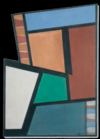
Carmelo Arden Quin
Green Plane
1945
Concrete Art/ Madi, Argentina
- Madi works starting to look playful, incorporate idea of broken irregular plane

Carmelo Arden Quin
Lines and Points
1950
Concrete Art/ Madi, Argentina

Rhod Rothfuss
Madí Composition
1946
Concrete Art/ Madi, Argentina
- Rothfuss was a trained artist, worked as a teacher, author of Broken Frame manifesto
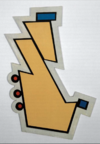
Rhod Rothfuss
Three Red Circles
1948
Concrete Art/ Madi, Argentina

Gyula Kosice
Röyi
1944
Concrete Art/ Madi, Argentina
- smooth wood pieces, can be shifted and re-fit together, meant to subvert idea of static sculpture
- Madi artists don’t theorize the perceptual, more about deconstruction of object, the perceptual simply a by-product of their intentions
- possible got idea of movable parts from TG’s toys

Gyula Kosice
Mobile Articulated Sculpture
1948
Madi/ Concrete Art, Argentina
- hung from ceiling, meant to be manipulated by viewer, constructed by metal bands that hold together handbags, meant to evoke a craftsmen sensibility, evokes working class roots of artists
- Kosice first to introduce literal movement into work, and spectator participation

Gyula Kosice
Madí Aluminum Structure no. 3
1946
Madi/ Concrete Art, Argentina
- Kosice becomes interested in expressing art’s relationship to life, his sculptures extend to experimental media, evoke transformation and a transgression of fixed meaning and static-ness (“Madi Aluminum Structure no. 3,” 1946 made with aluminum and florescent light)
- Can compare with Maholy-Nagy
- Kosice towards technical advances/ sci-fi, playful

1st Bienal, Sao Paolo, Brazil
1951

Lina Bo Bardi
Museu de Arte de São Paulo (MASP)
1947
Cite of 1st Bienal
Concrete Art/ Modernist Architecture, Brazil

Museum of Modern Art, Sao Paulo
(MAM-SP)
1948
[Site of Bienals?]
Concrete Art/ Modernist Architecture, Brazil
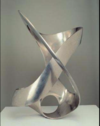
Max Bill (Swiss Artist)
Tripartite Unity
1948-49
Winner of prize at First Bienal, San Paolo
Concrete Art, Brazil
- Mobius strip
- industrial and polished
Grupo Frente
Rio de Janeiro:
Grupo Frente 1954→
• Lygia Clark
• Lygia Pape
• Ivan Serpa
• Abraham Palatnik
• Aluisio Carvão
• Franz Weissmann
• Amilcar de Castro
• Hélio Oiticia (slightly
later)
Grupo Ruptura
São Paulo:
Grupo Ruptura 1952→
• Waldemar Cordeiro
• Hermelindo Fiaminghi
• Judith Lauand
• Luis Sacilotto
• Nogueira Lima
• Lothar Charoux
• Geraldo de Barros

Waldemar Cordeiro
Visible Idea
1956
Acrylic on Masonite
“Grupo Ruptura” in São Paulo
Concrete Art, Brazil
- suggests symmetry (180 degree spinning of figure in space), line and plane moves from 2D to 3D, mathematicism and empirical scientific thought of Grupo Ruptura, and their adherence to primary color palette (thought color distracting)
- draw on constructive roots, Cordierdo more interested in unity of whole, he himself is writing about it; commonalities–written about in National Newspaper, so subsumed in modernist nationalist discourse and its parallels in modern art

Lygia Clark
Untitled
1957
Synthetic ink on Eucatex
“Grupo Frente” in Rio de Janeiro
Concrete Art, Brazil

Judith Lauand
Concrete 61
1957
(part of Grupe Ruptura, SP)
Concrete Art, Brazil

Lygia Clark
Composition 5
1954
Oil on canvas
Concrete Art, Brazil

Hélio Oiticia
Untitled
(From the Series Grupo Frente)
1955
Gouache on paper
Concrete Art, Brazil
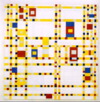
Piet Mondrian
Broadway Boogie Woogie
1942-43
Neo-Plasticism

Hélio Oiticia
Painting 9
1959
Oil on canvas
Concrete/ Neo-Concrete Art, Brazil
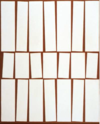
Hélio Oiticia
Metascheme Red and White
1959
Gouache on paper
Concrete Art/ Neo-Concrete Art, Brazil

Lygia Clark
Egg
1959
Concrete/ Neo-Concrete Art, Brazil
- move towards neoconcretism, title is referential, breaks frame

Brasilia
Constructed 1956-60
Oscar Niemeyer (chief architect)
Lúcio Costa (main urban planner)
Roberto Burle Marx (landscape designer)
International Style, Brazil
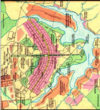
Lucio Costa (main urban planner)
Plan of Brasilia
1956-1960

Brasilia
Constructed 1956-60
Oscar Niemeyer (chief architect)
Lúcio Costa (main urban planner)
Roberto Burle Marx (landscape designer)
International Style, Brazil

Oscar Niemeyer
National Congress
Brasília
1957-1960
International Style, Brazil

The dome
of the Senate, Brasilia
Constructed 1956-60
Oscar Niemeyer (chief architect)
International Style, Brazil

Cupola of the
Chamber of Deputies,
Brasilia
Constructed 1956-60
Oscar Niemeyer (chief architect)
International Style, Brazil

Plaza of the Three Powers
Statue made to represent the laborers who built the city
Brasilia
International Style, Brazil

Oscar Niemeyer
Brasília
1957-60
Planalto Palace
(presidential offices)
International Style, Brazil

Oscar Niemeyer
Brasília
1957-60
Itamarati Palace
(Foreign Ministry building)
International Style, Brazil

Brasilia
Constructed 1956-60
Oscar Niemeyer (chief architect)
Lúcio Costa (main urban planner)
Roberto Burle Marx (landscape designer)
International Style, Brazil

Brasilia
Constructed 1956-60
Oscar Niemeyer (chief architect)
Lúcio Costa (main urban planner)
Roberto Burle Marx (landscape designer)
International Style, Brazil

Brasilia
Constructed 1956-60
Oscar Niemeyer (chief architect)
Lúcio Costa (main urban planner)
Roberto Burle Marx (landscape designer)
International Style, Brazil

Oscar Niemeyer
Close vertical view of entire northeast facade of
Secretariat,
Administrative
Center,
BRASILIA.
(patterns made by vertical blinds)
1956-1960
steel, concrete,
glass
International Style, Brazil

Oscar Niemeyer
Cathedral
Brasília
1957-60
International Style, Brazil

Oscar Niemeyer
Cathedral
Brasília
1957-60
International Style, Brazil

Brasilia
Constructed 1956-60
Oscar Niemeyer (chief architect)
Lúcio Costa (main urban planner)
Roberto Burle Marx (landscape designer)
International Style, Brazil

Lygia Clark
Modulated Space Number 3
1957
Concrete Art, Brazil

Helio Oiticica
Metaesquema (Metascheme)
1958
Neo-Concrete Art, Brazil
- moving towards Neo-concretism

Lygia Clark
Counter-Relief
1959
Neo-Concrete Art, Brazil
- 1959 breaking point year, Gullar writes NC manifesto
- reference to Tatlin, counter-reliefs put in corner and made of cardboard and other casual material, explores idea of 3D in 2D frame, later Bichos break the frame

Lygia Clark
Bicho
1960
Neo-Concrete Art, Brazil
- break frame, metal planes with hinges, manipulatable and modular

Lygia Clark
Bicho
1962
Neo-Concrete Art, Brazil
- break frame, metal planes with hinges, manipulatable and modular

Lygia Clark
The Inside is the Outside
1963
Neo-Concrete Art, Brazil
- break frame, metal planes with hinges, manipulatable and modular

Lygia Clark
Soft Work
1964
Neo-Concrete Art, Brazil
- takes off from works like ‘Egg’, uses rubber, charged industrial material, can be draped and hung

Lygia Clark
Soft Work
1964
Neo-Concrete Art, Brazil

Lygia Clark
Soft Work
1964
Neo-Concrete Art, Brazil

Lygia Clark
55th Venice Biennale Installation, 1968
Neo-Concrete, Brazil

Hélio Oiticia
Spatial Reliefs
1959
Neo-Concrete Art, Brazil
- meant to be hung from ceiling, ‘floating’ sculptures, photographed with children walking between suspended objects, similar to Bichos except monochom painted, scale is large and bodily

Hélio Oiticia
Spatial Reliefs
1959
Neo-Concrete Art, Brazil
- meant to be hung from ceiling, ‘floating’ sculptures, photographed with children walking between suspended objects, similar to Bichos except monochom painted, scale is large and bodily
- Oiticica’s in vibrant color, asymmetrical, a pre-given order, interest in geometry, the planes of the work are projected into space and are dynamic; materials depart from those traditionally used, moment of NC, moves to the theory of the “non-object” proposed by Gullar (and influenced by Pedrosa) and the quasi-corpus, relates to phenomenology and the experience of the viewer in relation to a movement around the object, its sensorial

Hélio Oiticia
Spatial Reliefs
1959
Neo-Concrete Art, Brazil
- meant to be hung from ceiling, ‘floating’ sculptures, photographed with children walking between suspended objects, similar to Bichos except monochom painted, scale is large and bodily

Hélio Oiticia
Spatial Reliefs
1959
Installation view
Neo-Concrete Art, Brazil
- meant to be hung from ceiling, ‘floating’ sculptures, photographed with children walking between suspended objects, similar to Bichos except monochom painted, scale is large and bodily

Hélio Oiticica
Grand Nucleus
1960-63
Neo-Concrete Art, Brazil
- suspended planes that create an environment that viewers can move through, gavel and sand underneath was an integral part, its as if viewer inhabiting a concrete painting, there’s a chromatic intensity

Helio Oiticica
Grand Nucleus, 1960-3
Neo-Concrete Art, Brazil
- suspended planes that create an environment that viewers can move through, gavel and sand underneath was an integral part, its as if viewer inhabiting a concrete painting, there’s a chromatic intensity

Helio Oiticica
Grand Nucleus, 1960-3
Neo-Concrete Art, Brazil
- suspended planes that create an environment that viewers can move through, gavel and sand underneath was an integral part, its as if viewer inhabiting a concrete painting, there’s a chromatic intensity

Lygia Clark
Air and stone
1966
Neo-Concrete Art (?), Brazil
- constructed of populist materials
- Clark in Paris 1965-70s

Lygia Clark and Hélio Oiticica
Dialogue of hands
1966
Neo-Concrete Art ?, Brazil
- takes mobius strip and turn into collaboration, its made active and bodily through their hands

Oiticica
Box Bolide 12 “Archeologic,”
1964–65
Neo-Concrete Art (?)/ Tropicalia, Brazil
- series, an investigation of color, boxes have pure pigment in them, translates as ‘fireball’, ‘low’ materials that he continues to use from this point forward, coincides with beginning of dictatorship

Oiticica
Box Bolide 12 “Archeologic,”
1964–65
Neo-Concrete Art, Brazil
- series, an investigation of color, boxes have pure pigment in them, translates as ‘fireball’, ‘low’ materials that he continues to use from this point forward, coincides with beginning of dictatorship

Nildo da Mangueira wearing
Parangolé P4 Cape 1
1964
Tropicalism, Brazil
- “Parangole”, 1964 series, coincides with his moving into the favelas and spending time in Mangueira, participates in Samba school where begins as teacher and becomes a teacher, the capes are colorful, meant to be worn, constructed of different materials, reference vernacular built environments of the favelas, in pockets you find different little objects (sand and shells), meant to be performed with, photographs of people from Favelas dancing in them, ideas of festivity and dance and performance
- Text often incorporated, they’re often neologisms (eg ‘We Live from Adversity’), sometimes text is hidden depending on how they’re worn
- Name Parangole considered to be written on beggar shelter, and is slang for ‘sudden confusion’ so comes from street, underdevelopment/ poverty

Hélio Oiticica
Parangolé
1964
Tropicalism, Brazil
- “Parangole”, 1964 series, coincides with his moving into the favelas and spending time in Mangueira, participates in Samba school where begins as teacher and becomes a teacher, the capes are colorful, meant to be worn, constructed of different materials, reference vernacular built environments of the favelas, in pockets you find different little objects (sand and shells), meant to be performed with, photographs of people from Favelas dancing in them, ideas of festivity and dance and performance
- Text often incorporated, they’re often neologisms (eg ‘We Live from Adversity’), sometimes text is hidden depending on how they’re worn
- Name Parangole considered to be written on beggar shelter, and is slang for ‘sudden confusion’ so comes from street, underdevelopment/ poverty

Hélio Oiticica
Parangolé
1964
Tropicalism, Brazil
- “Parangole”, 1964 series, coincides with his moving into the favelas and spending time in Mangueira, participates in Samba school where begins as teacher and becomes a teacher, the capes are colorful, meant to be worn, constructed of different materials, reference vernacular built environments of the favelas, in pockets you find different little objects (sand and shells), meant to be performed with, photographs of people from Favelas dancing in them, ideas of festivity and dance and performance
- Text often incorporated, they’re often neologisms (eg ‘We Live from Adversity’), sometimes text is hidden depending on how they’re worn
- Name Parangole considered to be written on beggar shelter, and is slang for ‘sudden confusion’ so comes from street, underdevelopment/ poverty

Helio Oiticica
P16 Capa 12: We live from Adversity
c. 1964
Tropicalism, Brazil

Performance of Hélio Oiticica’s Parangolé at MAM – Rio de Janeiro’s
“Opinião 65” Exhibition
August 12, 1965
Tropicalism, Brazil

Hélio Oiticica
Tropicalia
1967
1st installation in Rio
Tropicalia, Brazil
- incorporates vernacular architecture, text and animals, lounge room with TV (tool of state)
- Tropicalia, counter-culture movement spurred by this, goes into many other sectors of culture (music, theater, etc.)
- Oiticica argues that he was making reference to local elements, but his idea was to make it more universalist, didn’t want it to essentialize Brazilian identity to outsiders, or display it as frivolous or superficial

Hélio Oiticica
Eden
1969
Whitechapel Gallery, London
(Tropicalia also included in presentation)
Tropicalia/ Neo-Concrete Art, Brazil
- installation is a ‘nest’ where people are meant to sit and relax collectively and read magazines, etc.

Helio Oiticica
Nests, 1970
(Moves to NYC in 1970)
Tropicalia/ Neo-Concrete Art, Brazil

Helio Oiticica
Parangoles on NYC Subways,
c. 1970
Neo-Concrete Art/ Tropicalia, Brazil

Lygia Clark
Sensorial Masks
1967
Neo-Concrete Art, Brazil
- smell things that supposed to awaken senses
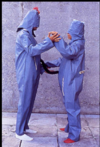
Lygia Clark
The I and the You:
Cloth Body Cloth Series
1967
Neo-Concrete Art, Brazil
- each suit is gendered supposed to put on opposite sex suit so awakens you to other subjectivities

Lygia Clark
Baba Antropofagica,
1973
Neo-Concrete Art (?), Brazil
- creates work that enters into realm of art therapy (teaching at Sorbonne in Paris, studies with student of Delueze), participants take spool of thread from mouth, cover with saliva, and cover central person on floor with it, title of work references the cannibalism of form and history in art (literally)
- Relation of individual to collective and how interact with group

Lygia Clark
Elastic network
1974
Neo-Concrete Art, Brazil
- creates work that enters into realm of art therapy (teaching at Sorbonne in Paris, studies with student of Delueze), participants take spool of thread from mouth, cover with saliva, and cover central person on floor with it, title of work references the cannibalism of form and history in art (literally)
- Relation of individual to collective and how interact with group







